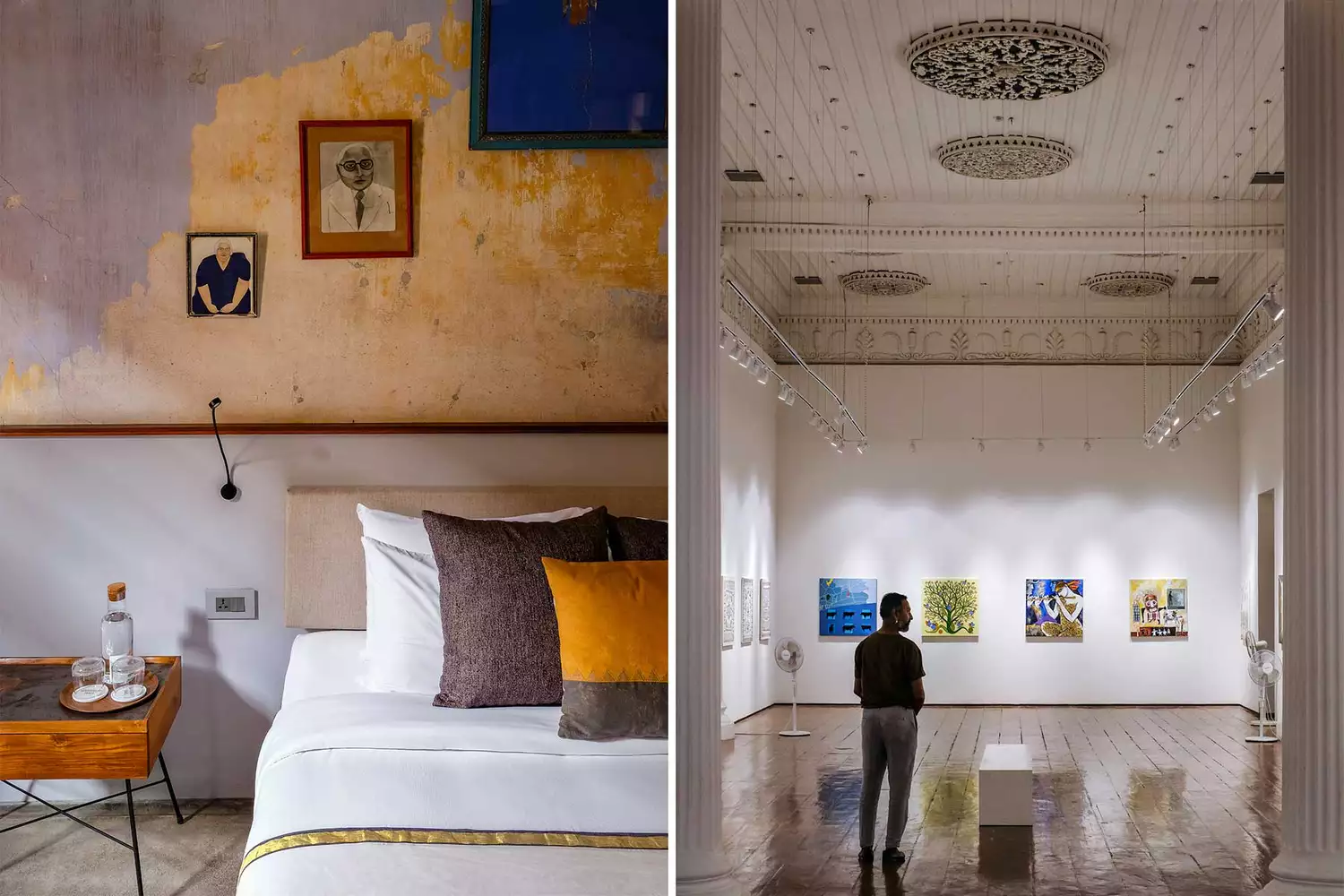“Are you sure we’re in the right location?” Himanshu, my photographer buddy, asked as we dragged our luggage down gravelly Synagogue Lane, home to Kochi’s Paradesi Synagogue. Back in 2019, the time of our check out, the 16th-century temple was the main factor travelers went to that part of town. The Jewish neighborhood that worshipped there had actually largely emigrated or passed on, their homes turned into tchotchke look for tourists or, in most cases, abandoned. Hence the uncertainty.
This street was also the place of a brand-new draw: Mandalay Hall, a boutique hotel (now a member of the Postcard group) created out of the 200-year-old shell of a landmarked family home. Designed by star Kochi designer Tony Joseph, each of its five spaces had actually been developed as artists’ showcases with site-specific setups curated by Bose Krishnamachari– a founder of the Kochi-Muziris Biennale, Asia’s largest contemporary art festival. We had heard the hotel was exposing of a broader trend: identified citizens were using art and design to upgrade the way visitors experience Kochi.

Halfway up Synagogue Lane a doorway led us into a sanctuary of clean lines and minimalist design. My space at Mandalay Hall was hung with pieces by artist Jigesh Kumar, including a frame containing a sandy Coke bottle that appeared to have actually been excavated from the desert.
” Prior to this, Mandalay Hall was a location for art events,” discussed Pallavi Kainady, who handled the property at the time. “So we chose to keep that going. Art is, after all, an aspect of the new Kochi.”
Numerous arts operations that were open then have since become fixtures in the neighborhood, including galleries such as Kashi, David Hall, and Gallery OED, and collectives like Via Kerala, which riffs on local cultural themes and turns them into modern-day souvenirs. Contemporary designers like Sreejith Jeevan– who co-creates his Origins in Kerala line of shift gowns, caftans, and coats with local weavers– were offering the scene a breath of fresh air.
And art had already entered into the guest experience at many hotels, like Kayal Island Retreat, a climatic four-cottage residential or commercial property in a former artists’ residency. Owner Maneesha Panicker, who likewise runs the experiential tour business Silk Route Escapes, hosts dance performances by the state’s only all-female kathakali troupe and takes visitors to fulfill Malayali rowboat makers, who still sculpt the vessels by hand.
The pandemic naturally put the spoke in this transformative wheel, but it hasn’t stopped it. All of the locations we visited have resumed, and February 2021 saw the launching of the Ernakulam District Heritage Museum, which is housed in a structure that was as soon as the seat of three royal powers: Portugal, Britain, and the Netherlands. It chronicles the lots of ethnic communities that have actually called Kochi home– a history visitors can literally sample at Brunton Boatyard, a dining establishment in a hotel where several foods come together in one thali.
And this previous December, under the aegis of the Biennale, almost a dozen galleries and museums pooled resources to organize the first Kochi Art Week: an effort, as Bose Krishnamachari put it, to “activate both artists and audiences in the post-pandemic landscape.” The primary venue was Pepper House, a 16,000-square-foot dockside warehouse changed by its owners, Tinky Mathew and Issac Alexander, into a mixed-use gallery, style shop, library, café, and studio. Effective was the occasion that Art Week will now be a long-term component on Kochi’s cultural calendar.
” Through the past 2 years, residents and domestic tourists have kept us going,” notes Aditi Nayar-Zacharias, director of the Kerala Museum, which flaunted a considerable collection from popular painter Raja Ravi Varma to Art Week visitors. “I can just hope that the support continues as worldwide visitors return.”
